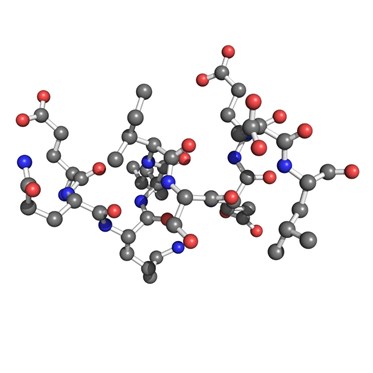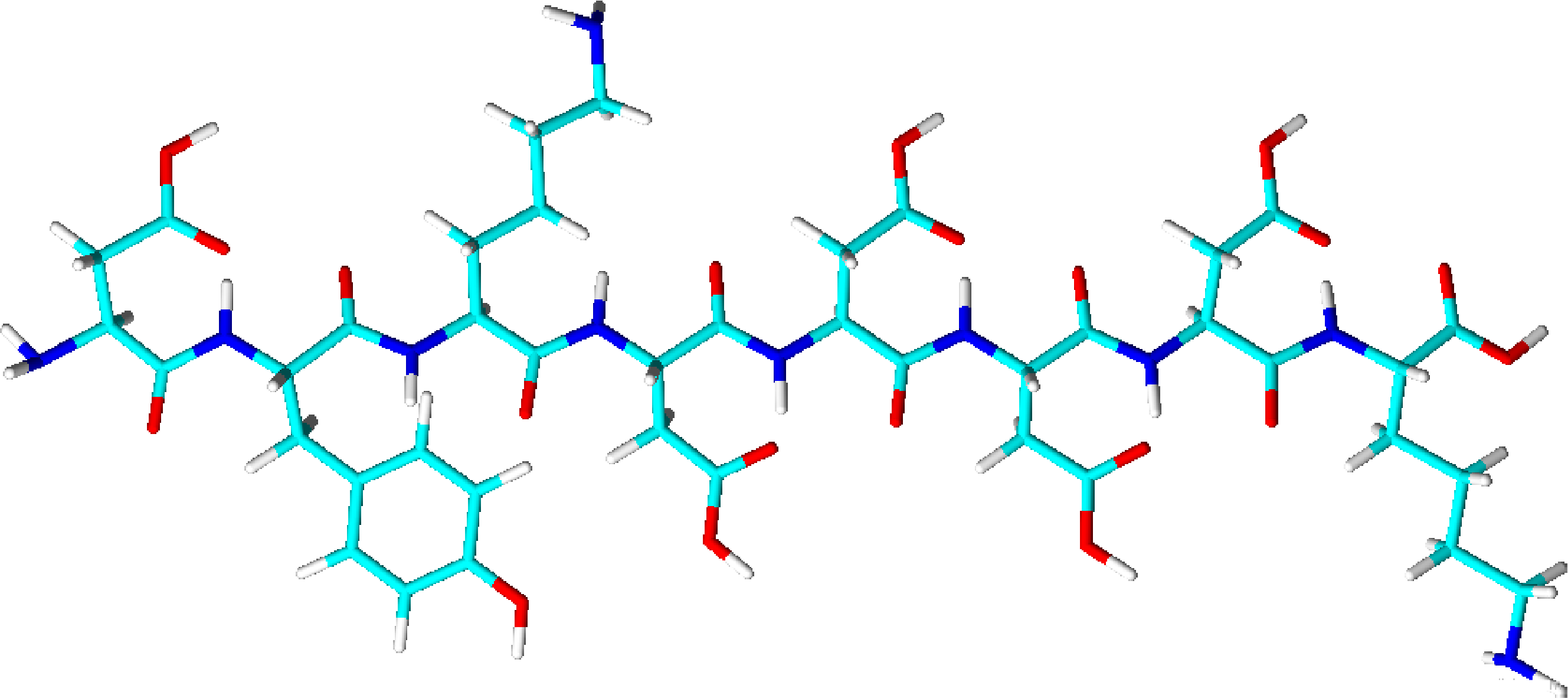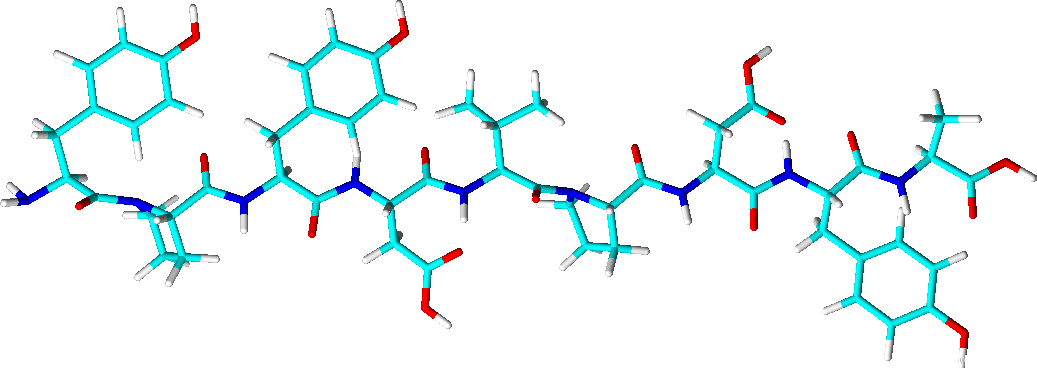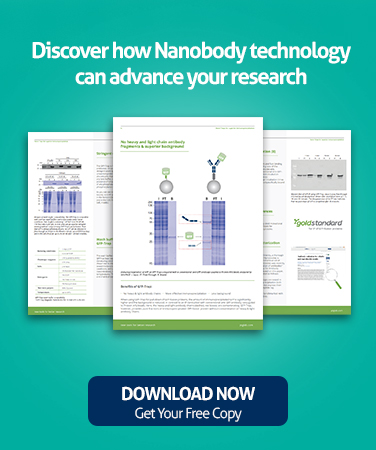Myc-tag: An epitope tag for protein characterization, protein interaction analysis, and purification.
Myc-tag is a peptide tag derived from the c-Myc protein. The Myc-tag can be used for many capture and detection applications such as immunoprecipitation, immunofluorescence and protein purification.
What is Myc-tag?
Myc-tag is an epitope tag derived from the c-Myc protein.
How does Myc-tag work?
A Myc-tag can be used to detect expression of recombinant proteins. Therefore, the Myc-tag is genetically fused/cloned to a protein of interest (POI). After expression, the Myc-tagged protein can be captured and identified in crude biological samples. Common applications are immunoprecipitation (IP) & co-immunoprecipitation (co-IP), immunofluorescence, ELISA, flow cytometry, protein purification, and Western blotting (WB).
3D structure of Myc-tag

Origin
The Myc-tag is derived from the human c-myc oncogene and corresponds to amino acid residues 410-419 of the C-terminus of human c-Myc protein. The human c-Myc was discovered as a cellular homolog of v-myc oncogenes, which were identified through analyses of avian tumors1,2. C-Myc is a transcription factor.
Properties
The Myc-tag contains 10 amino acids (aa) and the sequence is EQKLISEEDL.
Size of the Myc-tag
Number of amino acids: 10
Molecular weight (MW): 1203.31Da
Specifications of the Myc-tag
Theoretical isoelectric point (pI): 4.00
Total number of negatively charged residues (Asp + Glu): 4
Total number of positively charged residues (Arg + Lys): 1
Myc-tag epitope tag sequences
Myc-tag amino acid sequence:
EQKLISEEDL
Myc-tag DNA sequence:
GAA CAA AAA CTC ATC TCA GAA GAG GAT CTG
Please note, the mentioned sequence is optimized for mammalian expression.
Applications
Myc-tagged proteins are used in immunoprecipitation (IP), protein purification, Western blotting, ELISA, flow cytometry, and immunofluorescence (IF).
Myc-tag vs. Flag-tag
Comparison of Myc-tag and Flag-tag
| Myc-tag | Flag-tag | |
| Origin | human c-Myc | artificial design |
| 3D Structure |  |
 |
| Amino acid sequence | EQKLISEEDL | DYKDDDDK |
| Number of amino acids | 10 | 8 |
| Molecular weight (in Da) | 1203.31 | 1012.98 |
| Theoretical isoelectric point (pI) | 4.00 | 3.97 |
| Total number of negatively charged residues (Asp + Glu) | 4 | 5 |
| Total number of positively charged residues (Arg + Lys) | 1 | 2 |
Myc-tag vs. HA-tag
Comparison of Myc-tag and HA-tag
| Myc-tag | HA-tag | |
| Origin | human c-Myc | Human influenza hemagglutinin (HA) is derived from the human influenza virus |
| 3D Structure |  |
 |
| Amino acid sequence | EQKLISEEDL | YPYDVPDYA |
| Number of amino acids | 10 | 9 |
| Molecular weight (in Da) | 1203.31 | 1102.17 |
| Theoretical isoelectric point (pI) | 4.00 | 3.56 |
| Total number of negatively charged residues (Asp + Glu) | 4 | 2 |
| Total number of positively charged residues (Arg + Lys) | 1 | 0 |
Myc-tag vs. Spot-Tag®
Comparison of Myc-tag and Spot-Tag®
| Myc-tag | Spot-Tag® | |
| Origin | human c-Myc | Derived from human beta-catenin |
| 3D Structure |  |
 |
| Amino acid sequence | EQKLISEEDL | PDRVRAVSHWSS |
| Number of amino acids | 10 | 12 |
| Molecular weight (in Da) | 1203.31 | 1396.53 |
| Theoretical isoelectric point (pI) | 4.00 | 10.03 |
| Total number of negatively charged residues (Asp + Glu) | 4 | 1 |
| Total number of positively charged residues (Arg + Lys) | 1 | 2 |
How to elute Myc-tagged proteins?
Myc-tagged proteins are normally eluted using glycine or citric acid or by competitive elution with 1x Myc-peptide (EQKLISEEDL) or 2x Myc-peptide (EQKLISEEDLEQKLISEEDL).
Myc-tagged plasmids
Vectors for expression with Myc-tag for mammalian cells, Drosophila, etc. are available from Merck (Sigma-Aldrich) and ThermoFisher (Invitrogen).
Myc-tag Nanobodies and antibodies
For experimental analysis of Myc-tagged proteins, Nanobodies, monoclonal antibodies, and polyclonal antibodies are available:
•Recombinant Nanobody: ChromoTek Myc-Trap® or ChromoTek Myc VHH, recombinant binding protein
•Monoclonal antibody: Myc-tag monoclonal antibody (9E1) or MYC tag Monoclonal antibody
•Polyclonal antibodies: MYC tag Polyclonal antibody
Myc-Trap: The best anti-Myc-tag resin for immunoprecipitation
ChromoTek offers an anti-Myc-tag Nanobody conjugated to beads for immunoprecipitation:
Myc-Trap Agarose: anti-Myc-tag Nanobody conjugated to Agarose beads
Myc-Trap Magnetic Agarose: anti-Myc-tag Nanobody conjugated to Magnetic Agarose beads
Benefits of ChromoTek Myc-Trap in IP
• No heavy & light antibody chains in downstream applications
• Efficient and fast pulldown of Myc-tagged proteins
• One-step immunoprecipitation
• Peptide elution of native proteins
Reference
(1) Duesberg PH, Vogt PK. Avian acute leukemia viruses MC29 and MH2 share specific RNA sequences: evidence for a second class of transforming genes. Proc Natl Acad Sci U S A. 1979;76:1633–1637. [PMC free article] [PubMed]
(2) Sheiness D, Bishop JM. DNA and RNA from uninfected vertebrate cells contain nucleotide sequences related to the putative transforming gene of avian myelocytomatosis virus. J Virol. 1979;31:514–521. [PMC free article] [PubMed]
Related Content
Mass spec-compatible immunoprecipiation for GFP, mNeonGreen, Myc, RFP, Spot, and TurboGFPTags for protein purification
Immunoprecipitation of Myc-tagged proteins – How it works
How to immunoprecipitate Flag®-tagged proteins
Immunoprecipitation without additional bands
How to conduct a Co-immunoprecipitation (Co-IP)
Which beads should I use for my immunoprecipitation?
Advantages and limitations of different antibody formats in immunoprecipitation
8 Top Tips For Immunoprecipitation
Learn how to save precious hours on your IP, IF, and western blotting experiments
Support
Request a Free Nano-Trap Sample
Nano-Trap system provides fast, reliable, and effective immunoprecipitation of fusion proteins. More than 3,000 peer-reviewed articles have already been published using ChromoTek's Nano-Traps.

